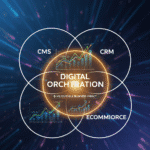Migrating your on-premises SharePoint 2016 environment to SharePoint Online unlocks modern collaboration, built-in security, and seamless integration with Microsoft 365. Yet without a clear roadmap, you risk downtime, data loss, and frustrated users. This guide walks you through the ten essential phases of a successful migration—from initial assessment to post-go-live optimization.
Discovery & Assessment
Objectives: Inventory content, customizations, and dependencies.
Content census: Use tools like SharePoint Migration Assessment Tool (SMAT) to catalog sites, lists, libraries, storage, version histories.
Customization audit: Identify farm solutions, sandboxed code, custom web parts, workflows (SharePoint Designer, InfoPath).
Permissions review: Extract current permission models and site ownership.
Network & bandwidth: Measure upload speeds and plan throttling windows for large migrations.
Tip: Classify sites by business criticality to prioritize migration waves.
Strategy & Planning
Objectives: Define scope, approach, timeline, and success criteria.
Migration approach:
Lift-and-shift (database attach): Quick but carries legacy architecture.
Modernization wave: Re-architect key intranets as modern Communication or Team sites.
Hybrid islands: Keep select workloads on-premises if needed during transition.
Timeline & phases: Schedule pilot → Wave 1 (pilot refinements) → Waves 2–N (bulk migration) → Decommission.
Governance blueprint: Update information architecture, taxonomy, retention labels for the cloud.
Environment Preparation
Objectives: Ready both source and target for migration.
SharePoint Online tenant setup:
Create hub/site collection architecture.
Configure custom domains, site designs, and global navigation.
On-prem cleanup:
Archive or delete stale sites/files.
Resolve orphaned users and broken links.
Identity & Authentication:
Implement Azure AD Connect for directory synchronization.
Enable Modern Authentication and MFA.
Proof of Concept (PoC)
Objectives: Validate your process on a small, representative sample.
Migrate a non-critical site collection end-to-end.
Test manual vs. automated migrations with SharePoint Migration Tool (SPMT) or third-party tools (ShareGate, Metalogix).
Validate permissions, metadata, version history, and page layout fidelity.
Gather user feedback on modern UI and navigation.
Content Migration
Objectives: Move documents, lists, pages, and metadata at scale.
Tool selection:
Microsoft SPMT: Free, good for simple lifts.
ShareGate / Metalogix: Paid, advanced scheduling, pre-migration analysis, transformation.
Mapping rules:
Map on-premises URLs to new site URLs.
Transform deprecated columns into modern metadata.
Scheduling & throttling:
Automate incremental syncs (delta migrations) to minimize cut-over window.
Use off-peak hours for bulk loads.
Customization & Modernization
Objectives: Replace or refactor legacy custom code.
SPFx vs. Classic web parts: Rebuild critical web parts using SharePoint Framework.
Power Platform: Convert InfoPath forms to Power Apps; legacy workflows to Power Automate flows.
Branding: Apply tenant-wide themes, header/footer using site designs and site scripts.
Testing & Validation
Objectives: Ensure completeness and quality before cut-over.
Content spot-checks: Verify document counts, metadata, version history.
Functional tests: Exercise customized apps, forms, and navigation.
Performance tests: Measure page load times and search relevancy.
User acceptance testing (UAT): Business users confirm critical scenarios (e.g., invoice approvals, onboarding lists).
Cut-Over & Go-Live
Objectives: Final sync, DNS switch, and user onboarding.
Final delta migration: Capture last-minute changes.
DNS updates: Redirect on-prem portal URL to SharePoint Online home site.
Communications:
Send go-live alerts with new URLs, OneDrive changes, and support contacts.
Host virtual “intranet launch” walkthrough wheels.
Support ramp-up: Stand up a “concierge desk” via Teams for immediate issue resolution.
Post-Migration Optimization
Objectives: Tune, train, and govern your new environment.
Search tuning: Refine query rules and result sources based on usage analytics.
Permissions audit: Ensure no over-permissioned sites slipped through.
Adoption programs:
Hands-on workshops, “SharePoint champions” network.
Release bite-sized “power user” tips via Yammer or Teams.
Monitor & iterate: Use the Microsoft 365 admin center to track site usage, storage growth, and feature rollouts.
Decommission & Archive
Objectives: Safely retire the old farm and free up on-premises resources.
Export or archive remaining on-prem data.
Decommission database servers and application servers.
Update runbooks, architectural diagrams, and governance docs to reflect the cloud-only topology.
Conclusion
Migrating from SharePoint 2016 to SharePoint Online is more than a technical lift; it’s an opportunity to modernize your information architecture, streamline governance, and empower users with a next-generation collaboration workspace. By following a structured, phased approach you’ll minimize risk, accelerate adoption, and ensure your intranet scales seamlessly with your organization.
Next Steps:
Run a free assessment with the SharePoint Migration Assessment Tool (SMAT).
Pilot your first site with SPMT or ShareGate.
Build your hub-and-spoke architecture in SharePoint Online.
Ready to transform your intranet? Let’s get started!




